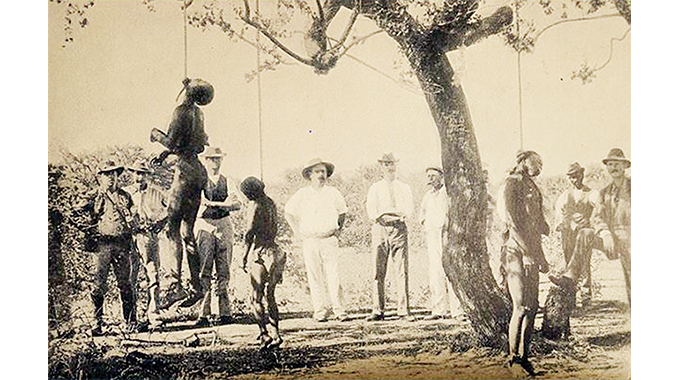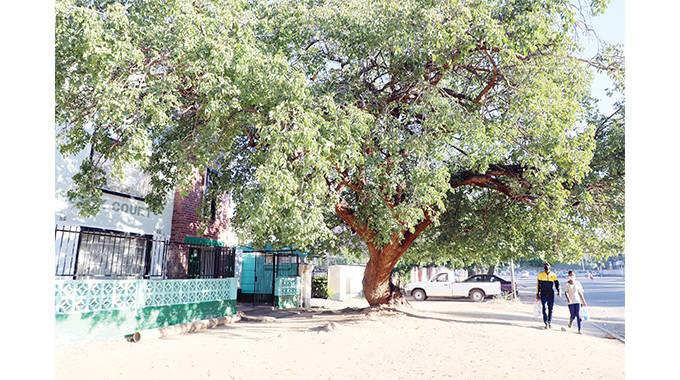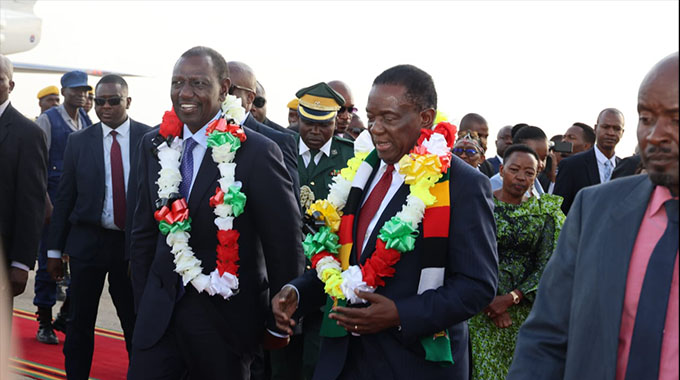Brits settlers hung nine Ndebele warriors on Hanging Tree

Nqobile Tshili, Chronicle Reporter
IT is more than 100 years old and a majority of Bulawayo residents go past it daily without a clue about its historical significance.
The gnarled tree still has green shoots in due season.
Those well-versed with the country’s history hail it as a symbol of resistance to colonialism and some go as far as saying it was one of the triggers or inspiration for the armed struggle that brought independence to Zimbabwe.
Now called the Hanging Tree because British settlers publicly hung nine Ndebele soldiers on it at the height of the Umvukela (Matabeleland uprisings) in 1896-7, the old False Amarula tree is located between Connaught and Masotsha Ndlovu Avenue along Joshua Mqabuko Nkomo Street.
Instead of scaring natives, historians believe it built a smouldering fire of resistance and resentment that fuelled future uprisings against British tyranny, culminating in the armed struggle that brought independence.
The hanging tree is near another place of immense historical value — the Inxwala site where the Ndebele nation used to hold cultural events.
The Inxwala ground has become the home for children’s amusement facility, Luna Park.
Government has since identified the Hanging Tree as a national monument as it symbolises both subjugation and resistance to colonialism by the country’s citizens.

People pass by the hanging tree where Ndebele soldiers were hanged by the British settlers along JMN Nkomo Street between Connaught Avenue and Masotsha Ndlovu Avenue in Bulawayo yesterday
The recognition could not have come at a better time than when the country celebrates 41 years of Independence eight days from today on April 18.
In its latest report, Bulawayo City Council (BCC) said Town Clerk, Mr Christopher Dube received a letter from the National Museum and Monuments of Zimbabwe (NMMZ) in December to the effect that Government wants to designate the Hanging Tree as a national monument.
Council said the tree was of national significance hence Government’s decision of taking a proactive role in nominating it as a national heritage site.
Government last year took a deliberate stance to recognise pre-independence and post-independence heroes as part of Zimbabwe’s aim to tell her story in full.
In the letter to the town clerk, NMMZ said the exercise is being spearheaded by Home Affairs and Cultural Heritage Minister Kazembe Kazembe.
“National Museum and Monuments of Zimbabwe at the request of the Minister of Home Affairs and Cultural Heritage, Cde Kazembe Kazembe is in the process of nominating the Hanging Tree in Bulawayo to become a national monument. The tree which is situated between Connaught and Masotsha Ndlovu Avenue is of historical importance as it was used during the height of the first Umvukela/Ndebele uprising in 1986 to hang nine African men found guilty by settler leaders for spying for Ndebele against occupation of the land,” reads the letter.
“The upgrading of the site into a national monument is being done as an effort to recognise the contributions of the first Umvukela/Chimurenga as part of the liberation heritage in the country. The upgrading of the site into a national monument will see the site being given national recognition. We therefore, ask for consent in the declaration of the site into a national monument.”
BCC acceded to the request, saying the move will go a long way in preserving the site which was of great political and historical significance.
“The declaration of the site might result in accrual of economic benefits as the place would be a centre of attraction and it would most likely bring revenue to the city from tourism-related activities,” reads the council’s report.
The local authority said NMMZ will bear the cost of securing the tree as a national monument.
In an interview, culturalist and social commentator Mr Cont Mhlanga said it was significant that the country was taking control of its narratives.
Mr Mhlanga said what Government has done is part of what they have been lobbying for as Amakhosi Cultural Centre and they have previously presented the idea to the council.
“The fact that we have arrived there (recognition of the tree) now is so exciting. It shows that it’s a start of greater things to happen especially if we can capture our own history, particularly that tree umganu-nkomo. That tree is the most important and significant tree among whole hordes of trees at the city centre. There are official pictures all over the world of people being hanged on that tree and four to five white guys standing there and having fun,” said Mr Mhlanga.
He said the whites carefully selected the tree to subjugate Africans by hanging them at the centre of the revered Inxwala grounds where Umthwakazi nation used to hold its cultural festivities.
Mr Mhlanga said Africans were killed at the Hanging Tree to instil fear so that they would not resist colonial dominance.
He said while the tree became a symbol of subjugation, nationalists used it as a form of resilience against colonialism.
“They used the tree to terrorise the blacks so that they cannot make an uprising effort. Remember the hanging was being done during 1896 Umvukela. I think the tree started as a celebration tree for whites but for Africans it resembles a torture chamber where people were tortured and then hung. To us now the tree is a symbol of resistance by our people. The most important thing about making it a national monument, is that it means we are bringing the narrative that was forgotten up to 1965. Because up to 1965 the area was cordoned and there was a bench,” he said.
“When the new nationalist resistance peaked in 1965, the (whites) removed the bench and the other materials which clearly demarcated the area so that people do not connect with the narrative of resistance surrounding the tree. It became an ordinary tree and in 1980, we did not return it to its rightful status that was taken away in 1965. So, by making it a national monument it means we are returning the narrative of resistance.”
Mr Mhlanga said sadly up to date, the Hanging Tree is unknown to the majority of residents in Bulawayo as it still looks like any ordinary tree.
“First of all, some Bulawayo residents don’t even know the tree exists, let alone its narrative. They don’t know that narrative because the narrative is not the narrative of the liberation struggle. But now it’s important that there be a proper demarcation and narration of history behind the tree. Artistes can do that and council and the NMMZ can issue a creative call for artistes to capture the story regarding the tree so that even someone who is passing near it can stop and read and understand what it signifies,” said Mr Mhlanga. — @nqotshili










Comments